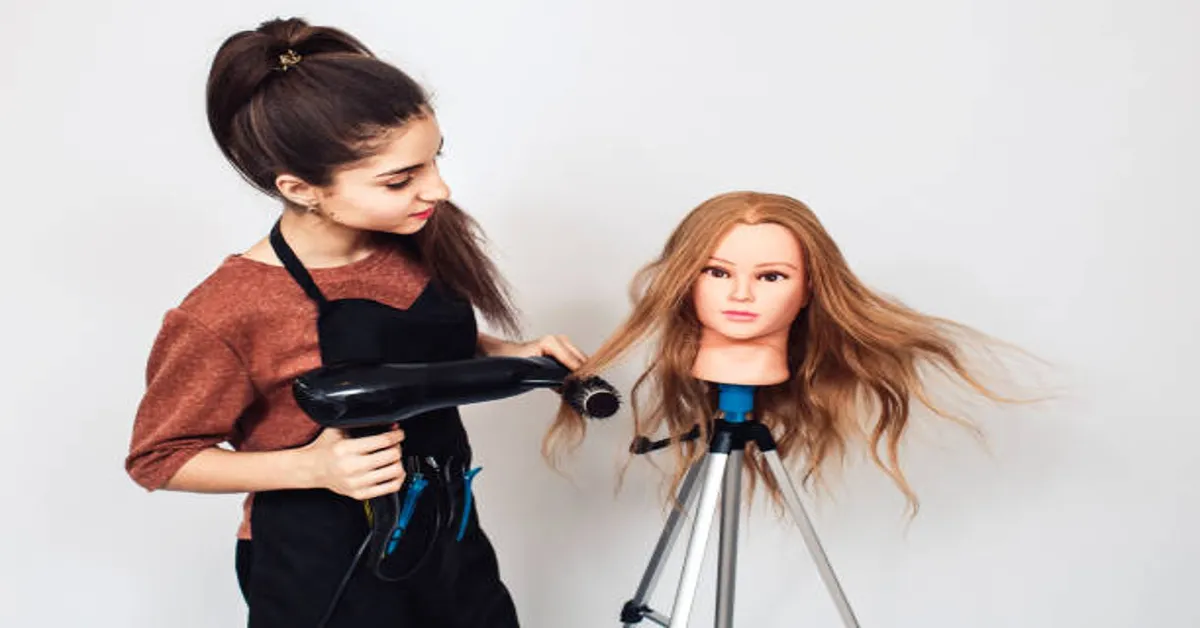Hairdressing styling is both a science and an art that plays a vital role in how we present ourselves to the world. It involves not only cutting and shaping hair but also creatively styling it in a way that enhances a person’s features, personality, and confidence. From simple blow-drying to intricate updos and braids, hairdressing styling encompasses a vast range of skills and methods. In this guide, we’ll explore the world of hairdressing styling in depth — its techniques, tools, preparation processes, product use, professional insights, and maintenance advice.
Understanding the Essence of Hairdressing Styling
Hairdressing styling goes far beyond mere aesthetics. It can dramatically transform one’s look, balance facial features, reflect individuality, and even influence mood. Whether for everyday elegance or special occasions like weddings or fashion shows, hair styling has the power to create lasting impressions.
Professionally, a hairdresser must be trained not only in handling scissors or curling irons but also in understanding hair texture, scalp health, face shape, fashion trends, and personal preferences. A successful style is one that is not only visually appealing but also suits the lifestyle and personality of the wearer.
Hairdressing styling typically includes washing and preparing the hair, applying suitable products, using tools like blow dryers, flat irons, curling tongs, and brushes, and finishing with techniques such as backcombing, teasing, setting, or braiding.
Types of Hair Styling Services
Hair styling services in salons can be broadly classified into several categories, each serving a unique purpose and involving specific methods. Here are some of the major types:
1. Blow-Drying and Finishing
Blow-drying is one of the most common and essential styling techniques. It involves drying the hair while shaping it with brushes to add volume, curls, or smoothness. The key lies in the control of heat and airflow direction to prevent damage while achieving the desired form.
2. Straightening and Smoothing
For clients seeking sleek, polished hair, flat ironing and smoothing treatments like keratin or Brazilian blowouts are commonly offered. These methods reduce frizz, enhance shine, and provide manageability. Proper sectioning, heat settings, and thermal protectants are crucial to maintain hair health during such processes.
3. Curling and Texturizing
Using curling irons, rollers, or hot rods, stylists can create everything from loose waves to tight spirals. Curling requires careful product application, especially heat protectors and hold sprays, to keep the curls intact without causing breakage.
4. Updos and Special Occasion Styles
These styles are typically reserved for formal events such as weddings, proms, or galas. They may involve complex braids, buns, chignons, or twists. Mastery of pinning, sectioning, and texturizing is essential to build styles that stay in place for extended periods.
5. Braiding and Weaving
Hair braiding is not just a fashion statement but often a cultural expression. From classic three-strand braids to intricate cornrows, fishtails, and box braids, this technique requires precision and patience. Extensions and weaves are often integrated to add volume and length.
6. Hair Extensions and Wigs
Modern hair styling has embraced extensions and wigs as tools for instant transformation. These can be sewn, taped, clipped, or glued, depending on the desired longevity and natural look. Stylists need to ensure proper blending and secure attachment for natural results.
Core Techniques in Hair Styling
To achieve consistently high-quality styling results, a hairdresser must master several fundamental techniques. Below are some essential styling principles:
Sectioning
Dividing hair into manageable sections is the first step in almost all styling tasks. Sectioning allows the stylist to work systematically and ensures uniformity. Proper sectioning depends on the hair’s length, density, and the specific style desired.
Backcombing
Backcombing or teasing is used to add volume to specific areas, typically at the crown. This technique involves combing the hair toward the scalp, creating a supportive base that helps hold shapes like bouffants or pompadours.
Twisting and Pinning
This involves rolling or wrapping hair and securing it with pins. It is crucial for updos and elegant styles. Pin placement and tension control are vital to avoid discomfort and ensure longevity of the style.
Finishing
Finishing touches include using shine sprays, hairsprays, and serums to lock in the style. The finishing stage also includes checking symmetry, smoothing flyaways, and ensuring the overall balance and appeal of the hairstyle.
Tools and Equipment Used in Hair Styling
A stylist is only as good as the tools they use. Here are the most essential tools found in a professional stylist’s kit:
- Blow Dryers: Modern dryers come with multiple speed and heat settings, and attachments like diffusers or concentrators.
- Straighteners (Flat Irons): Used for smoothing or curling, with ceramic or titanium plates for even heat distribution.
- Curling Irons and Wands: Vary in barrel size to achieve different curl types.
- Brushes and Combs: Paddle brushes, round brushes, detangling combs, teasing brushes—all serve unique functions.
- Clips and Sectioning Tools: Alligator clips, duckbill clips, and tail combs help with sectioning.
- Hair Pins and Elastics: Used for securing buns, twists, or braids.
- Sprayers and Bottles: Essential for dampening hair and distributing products evenly.
Hair Styling Products: Choosing the Right One
Every great style is supported by carefully chosen products. These may vary based on hair type, style goal, and duration of wear.
- Heat Protectants: Essential when using hot tools to prevent heat-induced damage.
- Mousses and Foams: Add volume and control, especially in blow-drying.
- Gels and Pomades: Provide structure, hold, and shine for short or slicked styles.
- Texturizers and Dry Shampoos: Add grip and body, especially useful in updos.
- Serums and Oils: Add shine and smoothness, especially for straight or glossy styles.
- Hair Sprays: Provide varying levels of hold from flexible to strong depending on styling needs.
Face Shape and Styling Suitability
Understanding facial structure helps determine what styles are most flattering:
- Oval Face: Most versatile; can wear nearly any style.
- Round Face: Styles with height and volume at the crown elongate the face.
- Square Face: Soft waves and layered cuts can soften strong jawlines.
- Heart-Shaped Face: Side parts and long layers balance the forehead and chin.
- Long Face: Styles with width and body at the sides offer better symmetry.
Hair Texture and Styling Adaptation
Hair texture determines how easily it can be styled and what it responds best to:
- Fine Hair: Needs volume-building products and gentle heat styling.
- Medium Hair: Versatile for most styles; adapts well to both curls and smooth finishes.
- Thick Hair: Requires stronger tools and heavier products to manage bulk.
- Curly Hair: Needs hydration, curl-defining products, and minimal heat.
- Coily Hair: Best styled with stretching methods or protective styles like braids and twists.
Common Challenges in Hair Styling
Despite professional techniques, stylists often face common challenges:
- Frizz: Caused by humidity or product imbalance. Solved with smoothing serums or anti-humidity sprays.
- Flat Roots: Fixed with volumizing products and backcombing techniques.
- Unmanageable Curls: Need proper hydration and curl-specific styling creams.
- Short Lifespan of Style: Resolved by prepping the hair properly with mousse, setting sprays, and secure pinning.
Hair Care Before and After Styling
Healthy styling begins with healthy hair. Here’s how to prepare and maintain hair before and after styling:
Before Styling
- Cleanse Hair: Use appropriate shampoo and conditioner based on hair type.
- Towel Dry Gently: Avoid rough drying which can cause breakage.
- Apply Leave-In Conditioners: Protect and prep the hair.
- Use a Heat Protectant: Always apply before using hot tools.
After Styling
- Avoid Over-Touching: Prevent oils from hands from breaking down the style.
- Cover Hair at Night: Use silk scarves or pillowcases to reduce friction.
- Use Dry Shampoo: Extend the style by absorbing oil without washing.
- Hydrate Regularly: Keep hair nourished with masks and oils between styles.
Trends and Innovations in Hair Styling
Hair styling trends evolve with fashion, technology, and cultural shifts. Some notable recent trends include:
- Textured Bobs and Lobs: Medium cuts with beachy waves for a casual yet polished look.
- Curtain Bangs: Soft face-framing layers suitable for most face shapes.
- Sleek Ponytails and Braids: Popular for both casual and formal settings.
- Natural Texture Embracing: Encouraging curls, coils, and kinks rather than straightening.
- Eco-Friendly Styling Products: Plant-based, sustainable, and free of harmful chemicals.
Becoming a Professional Hair Stylist
If you’re interested in hairdressing styling as a career, here are the typical steps:
- Enroll in a Cosmetology School: Learn basic and advanced techniques.
- Get Licensed: Depending on your country or state, a professional license is required.
- Gain Experience: Work under mentors, assist at salons, and take advanced courses.
- Build a Portfolio: Document your styles to showcase your versatility.
- Stay Updated: Continuously learn through workshops, expos, and tutorials.
Conclusion
Hairdressing styling is a rich field blending creativity, technical skills, and personalized service. Whether you’re a professional stylist or someone looking to improve personal haircare, understanding the fundamentals of styling—from techniques and tools to product selection and hair type analysis—can help you achieve beautiful, lasting results. The key is to respect the unique nature of every individual’s hair and continually adapt styling practices to meet evolving needs and trends. A well-styled head of hair can do wonders for self-esteem and is one of the most powerful tools in personal grooming.
ALSO READ: GF Ball: A Complete Guide to Its Purpose, Structure, and Applications
FAQs on Hairdressing Styling
1. What is the difference between hairdressing and hairstyling?
Hairdressing is a broader profession involving cutting, coloring, treating, and styling hair, while hairstyling focuses solely on shaping and arranging hair into various looks.
2. Can I style my hair every day without damage?
Yes, with proper heat protection, quality tools, and gentle techniques, daily styling can be safe. Avoid excessive heat and always use conditioning treatments.
3. What is the best hairstyle for thin hair?
Layered cuts with volume-enhancing products and techniques like blow-drying with a round brush or using texturizing sprays work well for thin hair.
4. How long does a professional hairstyle usually last?
It depends on the style, hair type, and products used. Blowouts can last 2–3 days, while updos for events can hold up for 8–12 hours or more with proper pinning.
5. How do I know which hair products are best for my hair type?
Identify your hair texture (fine, medium, thick) and condition (dry, oily, color-treated) and choose products designed specifically for those characteristics. A stylist can also recommend suitable products.









